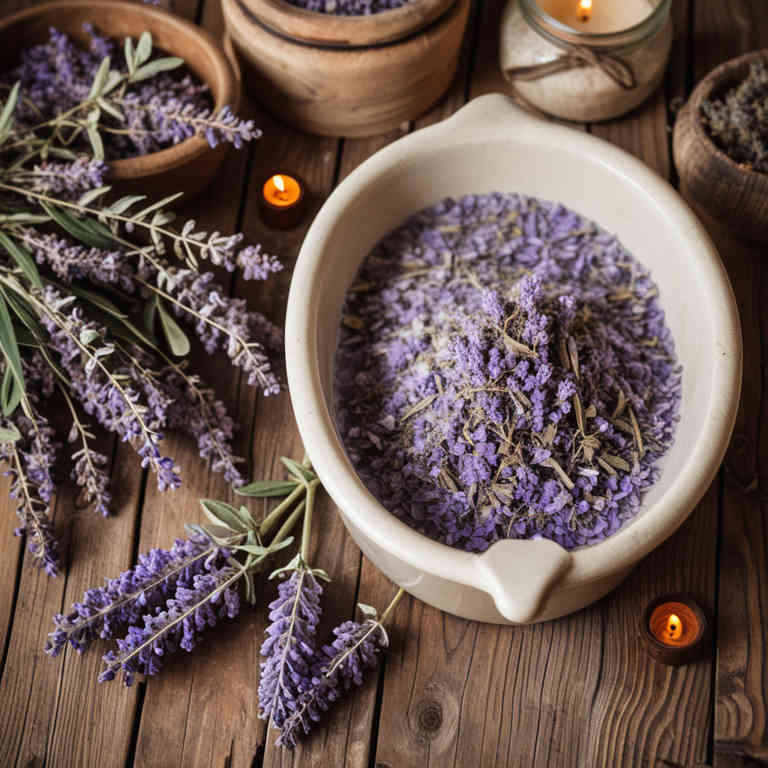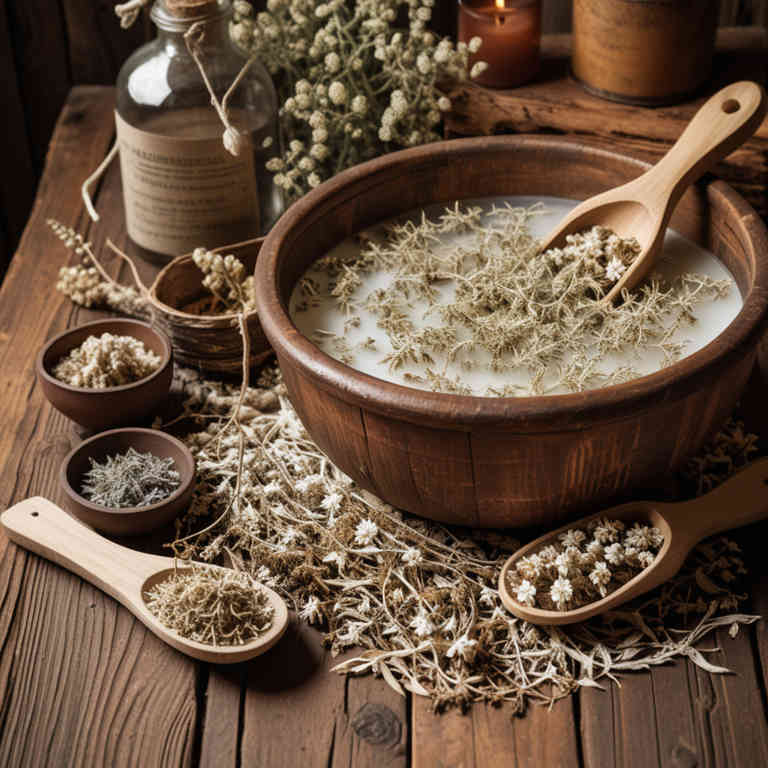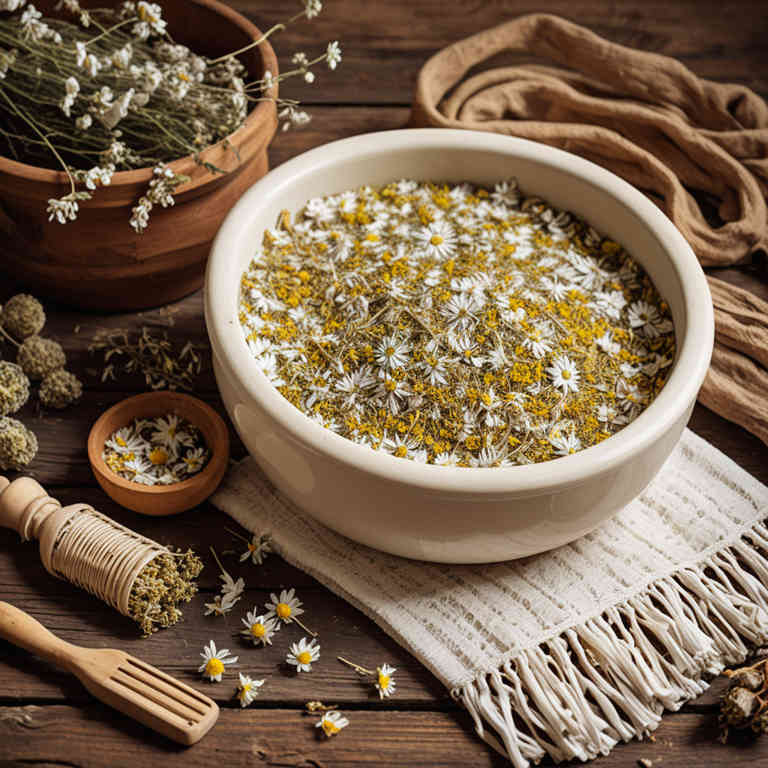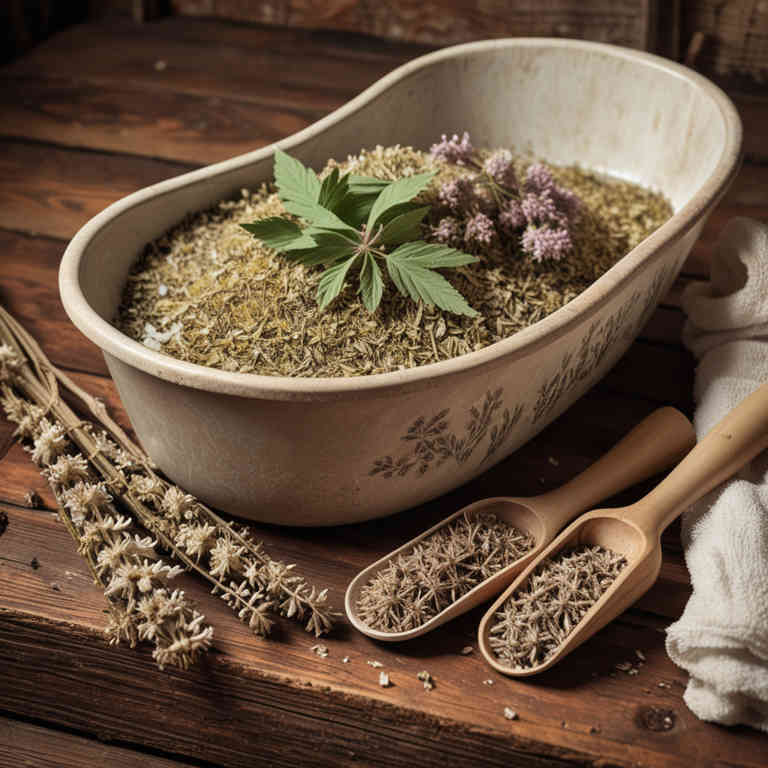10 Best Herbal Baths For Hot Flashes

Herbal baths have gained popularity as a natural remedy for alleviating the discomfort of hot flashes, particularly among women experiencing menopause.
Certain herbs, such as lavender, chamomile, and sage, are believed to have calming and cooling properties that may help reduce the intensity and frequency of hot flashes. When added to warm bath water, these herbs can create a soothing environment that promotes relaxation and helps regulate body temperature. Some studies suggest that the aromatherapy aspect of herbal baths may also influence the nervous system, offering additional relief.
While herbal baths are generally safe, it is advisable to consult a healthcare provider before use, especially for those with allergies or existing medical conditions.
FREE Herb Drying Checklist
How to make sure every batch retains maximum flavor, color, and aroma without the risk of mold or over-drying. Eliminate guesswork and trial-and-error, making herb drying faster, easier, and more efficient every time.
Table of Contents
1. Vitex agnus-castus

Vitex agnus-castus, commonly known as chaste tree berry, has been traditionally used in herbal medicine to support hormonal balance, making it a popular choice for managing hot flashes.
When used in herbal baths, vitex can help soothe the body and promote a sense of calm, which may alleviate some of the discomfort associated with hot flashes. The calming properties of vitex are believed to interact with the hypothalamus, the part of the brain that regulates body temperature, potentially reducing the frequency and intensity of hot flashes. To prepare a vitex herbal bath, steep the dried berries in hot water for several hours, then add the infused liquid to a warm bath.
Regular use of vitex agnus-castus herbal baths may offer a natural and gentle approach to managing menopausal symptoms, though it is advisable to consult a healthcare provider before starting any new herbal regimen.
2. Lavandula angustifolia

Lavandula angustifolia, commonly known as English lavender, has been traditionally used in herbal baths to alleviate symptoms of hot flashes associated with menopause.
The calming and soothing properties of lavender essential oil can help reduce the intensity and frequency of these sudden temperature spikes by promoting relaxation and lowering stress levels. When infused into bath water, lavender can create a comforting and aromatherapeutic experience that supports emotional balance. Studies suggest that the phytochemical compounds in lavender may influence hormonal regulation and provide a natural alternative for managing menopausal symptoms.
Incorporating lavender into a warm bath can offer a safe, non-invasive, and pleasant method for women seeking relief from hot flashes without the use of pharmaceuticals.
3. Urtica dioica

Urtica dioica, commonly known as stinging nettle, has been traditionally used in herbal baths to help alleviate the symptoms of hot flashes associated with menopause.
When infused into warm water, the compounds in stinging nettle, such as silica and antioxidants, may help reduce inflammation and promote a cooling effect on the body. These baths are believed to support hormonal balance and soothe the skin, offering a natural and calming remedy for women experiencing frequent or intense hot flashes. The soothing properties of the plant can also help relax muscles and ease the discomfort often linked with sudden temperature changes.
While more research is needed, many women find relief and a sense of well-being through regular use of stinging nettle herbal baths.
4. Equisetum arvense

Equisetum arvense, commonly known as horsetail, has been traditionally used in herbal baths to alleviate symptoms of hot flashes, particularly in women undergoing menopause.
The plant is rich in silica and other minerals that may help support hormonal balance and soothe the skin. When infused into bath water, horsetail can provide a calming and cooling effect, helping to reduce the intensity and frequency of hot flashes. Its anti-inflammatory properties may also contribute to overall comfort during this transitional phase.
While more research is needed, some herbalists and natural health practitioners recommend horsetail baths as a complementary approach to managing menopausal symptoms.
5. Rosmarinus officinalis

Rosmarinus officinalis, commonly known as rosemary, has been traditionally used in herbal baths to help alleviate symptoms of hot flashes associated with menopause.
The aromatic compounds in rosemary, such as cineole and camphor, are believed to have cooling and calming effects on the body, which may help reduce the intensity and frequency of hot flashes. When infused into bathwater, rosemary can create a soothing environment that promotes relaxation and stress relief, both of which are known to influence hormonal balance. Some studies suggest that the anti-inflammatory and antioxidant properties of rosemary may contribute to its therapeutic benefits in managing menopausal symptoms.
While more research is needed, many women find comfort in incorporating rosemary herbal baths as a natural and complementary approach to managing hot flashes.
6. Cimicifuga racemosa

Cimicifuga racemosa, also known as black cohosh, has been traditionally used in herbal baths to alleviate symptoms of hot flashes associated with menopause.
When infused into bathwater, the herb is believed to have a calming effect on the body, helping to reduce the frequency and intensity of hot flashes. The anti-inflammatory and phytoestrogenic properties of cimicifuga racemosa may contribute to its efficacy in soothing hormonal imbalances. Herbal baths with cimicifuga racemosa are often preferred by those seeking natural, non-hormonal alternatives to conventional treatments.
However, it is important to consult a healthcare provider before using this herb, especially for individuals with certain medical conditions or those taking other medications.
7. Chamomilla recutita

Chamomilla recutita, commonly known as German chamomile, has been traditionally used for its calming and soothing properties, making it a popular choice for herbal baths aimed at alleviating hot flashes.
When infused into bath water, chamomile releases compounds such as bisabolol and flavonoids, which may help reduce inflammation and promote relaxation. These baths can provide a gentle cooling effect on the skin, offering temporary relief from the discomfort of sudden heat waves associated with menopause. Additionally, the aromatic properties of chamomile may help ease anxiety and improve sleep quality, which are often linked to the frequency and intensity of hot flashes.
While herbal baths are not a substitute for medical treatment, they can serve as a complementary therapy to support overall well-being during menopausal transition.
8. Hypericum perforatum

Hypericum perforatum, commonly known as St. John's Wort, has been traditionally used in herbal baths to help alleviate symptoms of hot flashes associated with menopause.
When infused into warm water, the plant's active compounds, such as hypericin and hyperforin, may have mild sedative and anti-inflammatory effects that can soothe the body's response to hormonal fluctuations. These baths are believed to promote relaxation and reduce the frequency and intensity of hot flashes by calming the nervous system. While research on its efficacy for hot flashes is limited, some women report feeling more comfortable and at ease after regular use of St. John's Wort baths.
As with any herbal remedy, it is important to consult with a healthcare provider before use, especially if taking other medications, due to potential interactions.
9. Paeonia suffruticosa

Paeonia suffruticosa, commonly known as tree peony, has been traditionally used in herbal remedies for its potential to alleviate menopausal symptoms, including hot flashes.
When incorporated into herbal baths, the plant's bioactive compounds may help regulate body temperature and reduce the frequency and intensity of hot flashes. These baths typically involve soaking in water infused with dried peony root or leaves, allowing the skin to absorb the calming and cooling properties of the herb. The soothing effects of the bath can also promote relaxation and reduce stress, which is often a contributing factor to hot flashes.
While more research is needed, preliminary studies and traditional use suggest that paeonia suffruticosa herbal baths may offer a natural and holistic approach to managing menopausal discomfort.
10. Valeriana officinalis

Valeriana officinalis, commonly known as valerian, is a traditional herbal remedy that has been used for centuries to promote relaxation and improve sleep.
When incorporated into herbal baths, valerian can help alleviate the discomfort of hot flashes by soothing the nervous system and reducing anxiety, which often exacerbates symptoms. To prepare a valerian bath, steep dried valerian root in hot water for several hours, then add the liquid to a warm bath. The calming properties of valerian may help regulate body temperature and ease the intensity of hot flashes.
While herbal baths can be a complementary approach, they should not replace medical advice, and it is important to consult a healthcare provider before using valerian, especially for those on medications or with underlying health conditions.